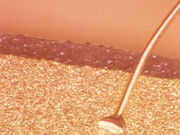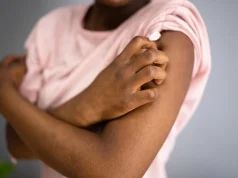Elastic modulus, Poisson’s ratio, and mechanical toughness vary with relative ambient humidity
THURSDAY, Sept. 29, 2016 (HealthDay News) — Researchers have developed a method to measure the limit to which human skin can be stretched, which could lead to a new means to grow skin, according to a study published in the Oct. 1 issue of Acta Biomaterialia.
Noting that a mechanistic understanding of the soft tissue of the stratum corneum is lacking, Xue Liu, from Binghamton University in New York, and colleagues quantified global mechanical properties of isolated stratum corneum using African-American breast tissue samples.
The researchers found that the parameters measured (elastic modulus, Poisson’s ratio, and mechanical toughness) were highly dependent on the ambient humidity to which samples were equilibrated. Spatially resolved equivalent strain fields with uniaxially stretched stratum corneum samples exhibited a striking heterogeneity at the mesoscale, with localized peaks correlating with crack nucleation sites. Crack propagation pathways followed topographical features that were inherent in the tissue, and these lengthened with increased hydration of tissues. Intact corneocytes and polygonal shaped voids at crack interfaces highlighted that cracks propagate in superficial cell layers at the microscale, with propagation mainly along intercellular junctions. Cellular fracture was uncommon but did occur.
“These results have direct relevance to improving mechanical models that study the collective mechanics of full thickness skin, epidermal drug delivery, and the effects of cosmetic products on skin,” the authors write.
The safety razor company Schick funded parts of the research.
Full Text (subscription or payment may be required)
Copyright © 2016 HealthDay. All rights reserved.








